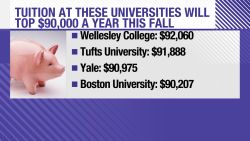After several months of plummeting sales caused by the coronavirus pandemic, the housing market came back to life in June, according to the National Association of Realtors.
Sales of previously owned homes jumped a record 20.7% from May, the largest month-over-month increase since NAR began tracking in 1968.
More from Success
“Record low mortgage rates are no doubt helping to bring buyers to the market,” said Lawrence Yun, NAR’s chief economist. “But the inventory levels are shrinking, which could create a bottleneck for sales gains going forward.”
Still, the revitalization looks to be sustainable for many months to come, said Yun, as long as mortgage rates remain low and job gains continue.
But sales are still below where they were pre-pandemic and remain down from this time last year. The year-over-year decline in existing home sales – which includes completed sales of single-family homes, townhomes, condominiums and co-ops – was 11.3%.
While the improvements could be dampened by a resurgence of coronavirus cases, a faltering economy and buyers’ comfort levels, this is progress for the housing market, said Robert Frick, corporate economist at Navy Federal Credit Union. The market may just be up and down for a while.
“Sales are still hampered by the weak economy, which causes fewer Americans to move for jobs and keeps the supply of existing homes on the market low, as well as the potential buyers’ reluctance to tour homes due to Covid-19,” said Frick. “Virtual tours help, but they are no substitute for a buyer’s in-person inspection.”
Prices continue to rise on low inventory
Homes sold quickly and at high prices in June, even as inventory remained tight.
“Home prices rose during the lockdown and could rise even further due to heavy buyer competition and a significant shortage of supply,” said Yun.
The median price of an existing home in June was at an all-time high of $295,300, which is up 3.5% from a year ago. June’s price increase marks 100 straight months of year-over-year gains.
With such low inventory, homes didn’t sit long. Properties were typically on the market for 24 days last month, down from 26 days in May and even less time than the average 27 days in June 2019. Over half of homes sold in June 2020 were on the market for less than a month.
Low inventory of available homes for sale continued to curb market activity, said Yun. While housing inventory at the end of June was up 1.3% from May, it was still down 18.2% from one year ago.
Sales increased in every region of the US in June. Median home prices grew in each of the four major regions from one year ago.
Record low rates keeping buyers interested
“Buyers are out in force, but new listings remain the key to housing’s recovery,” said Danielle Hale, Realtor.com’s chief economist. “More sellers are needed before we’ll see year-over-year gains in home sales.”
She pointed to forward-looking indicators, like buyer traffic and mortgage applications, which are higher than they were this time last year and show that the demand is there.
One big reason: Mortgage rates are at record lows. Last week, the average rate for a 30-year-mortgage fell below 3%, according to Freddie Mac, the first time the bechmark rate has fallen that low in the 50 years of the survey.
The number of mortgage applications ticked up 4.1% last week from one week earlier, according to the Mortgage Bankers Association. While much of that activity is because current homeowners are refinancing mortgages, applications for loans to purchase a home went up 2% from last week and 19% over last year.
“There continues to be strong homebuyer demand this summer, as home shoppers have returned to the market in many states,” said Joel Kan, MBA’s associate vice president of economic and industry forecasting.
But the ongoing pandemic could continue to impact home sales.
“The recent resurgence in case numbers is likely to impact demand and continue to keep inventory at suppressed levels,” said Ruben Gonzalez, chief economist for real estate firm Keller Williams. “But agents and consumers have now had ample time to adapt to social distancing practices and virtual tools, so the impact on sales may be less than we saw in April.”


























